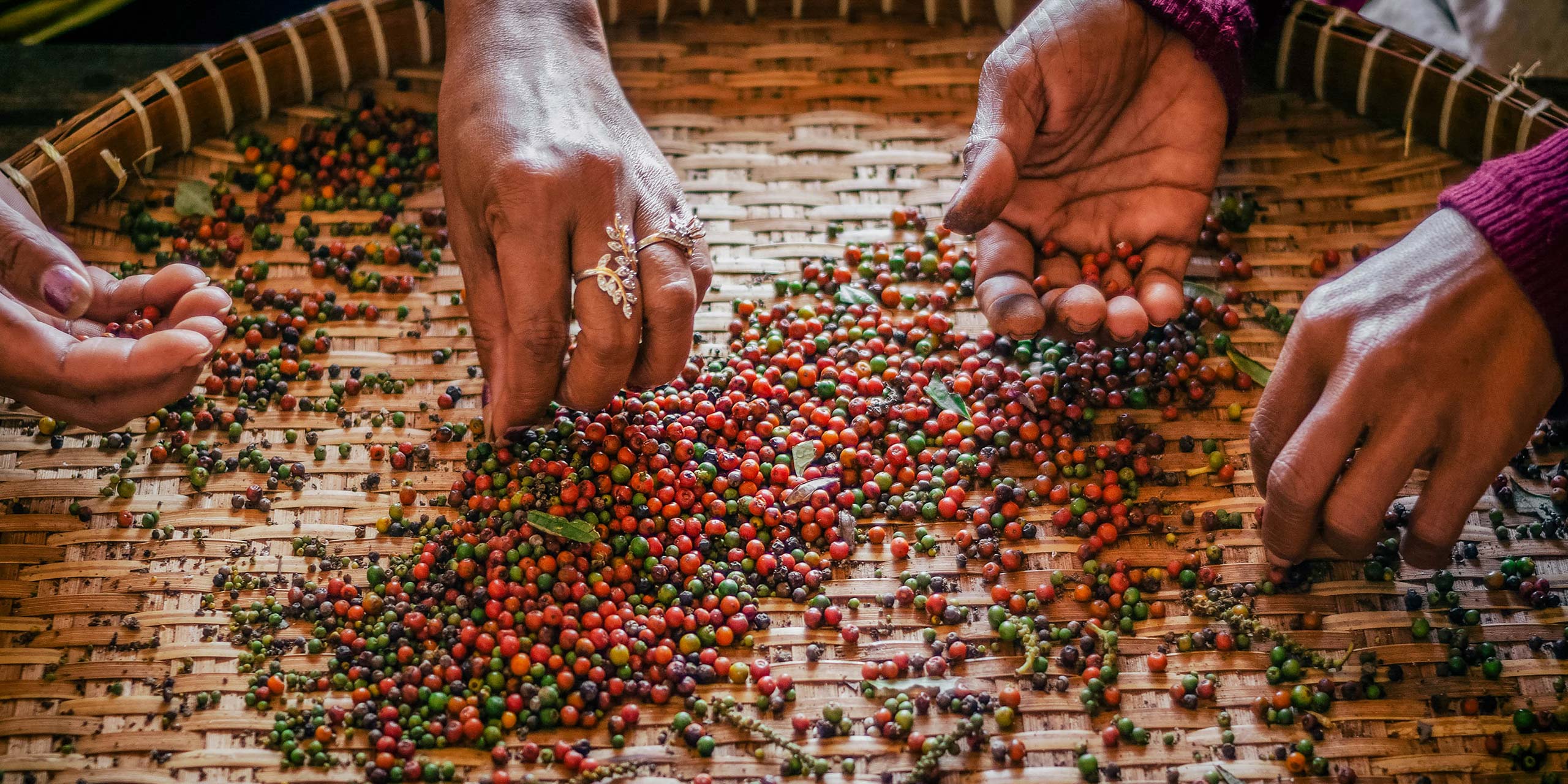
“Exhale and then carefully breathe in to make the most of the aromas,” says Pisith Theam, the Executive Chef at the Park Hyatt Siem Reap. “The white is sweet and the red is much more spicy,” he adds as he passes round samples to the assembled group of foodies with reverential care.
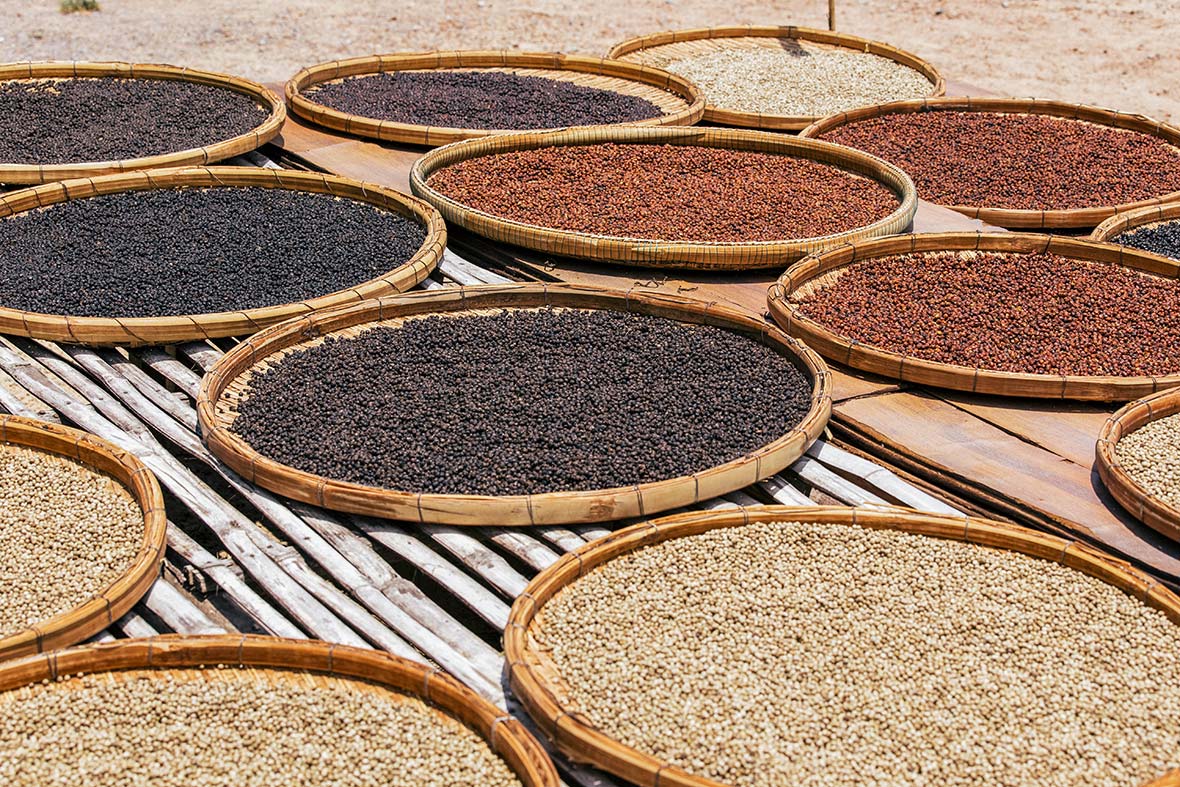
“The white is sweet and the red is much more spicy,”
Pisith Theam, the Executive Chef
at the Park Hyatt Siem Reap
We are not, however, about to inhale a complex, piquant Rioja from the far north of Spain. Nor for that matter are we being urged to muse upon the wonders of a perfumed sauvignon blanc from Bordeaux. No, the gourmet manna we are about to let excite our nostrils are varieties of that most undervalued of spices, the humble peppercorn.
A feature on dinner tables around the world, pepper has, it must be said, gone through the mill both literally and figuratively. Used since antiquity for both its flavour and as a medicine, pepper is the world’s most traded spice. Such ubiquity though has been somewhat detrimental to its reputation with the mass export of fair-to-middling product from pepper-producing countries resulting in a general uniformity of taste.
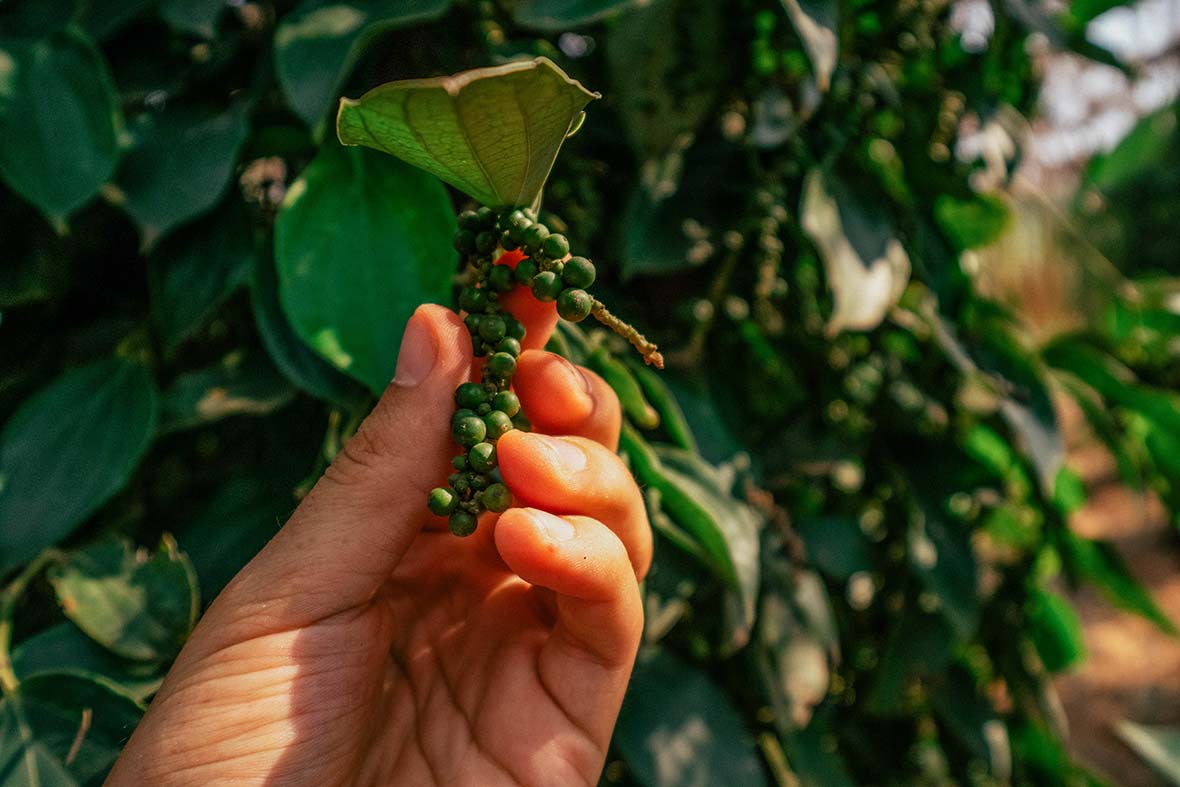
The spice that Theam is proffering, however, is far removed from the stuff you find in your average supermarket peppermill. This is Kampot pepper from southern Cambodia, a thing of culinary legend regarded by gourmands as the best pepper in the word.
“It is the champagne of pepper,” enthuses Theam. “In fact, it is all about terroir, just like wine. Pepper vines are the same wherever you go, and the way pepper is produced and farmed doesn’t vary all that considerably. What makes Kampot pepper special is the micro-climate in the province.”
The ingredient is only produced in half a dozen districts of the Cambodian provinces of Kampot and Kep, and is the first Cambodian product to enjoy the EU’s protected geographical status, which certifies the origin of regional foods such as Champagne. Sandwiched between cool, jungle clad mountains and the tepid waters of the Gulf of Thailand, the area enjoys the perfect microclimate for pepper growing with mineral rich – mostly quartz — soil and frequent rainfall.
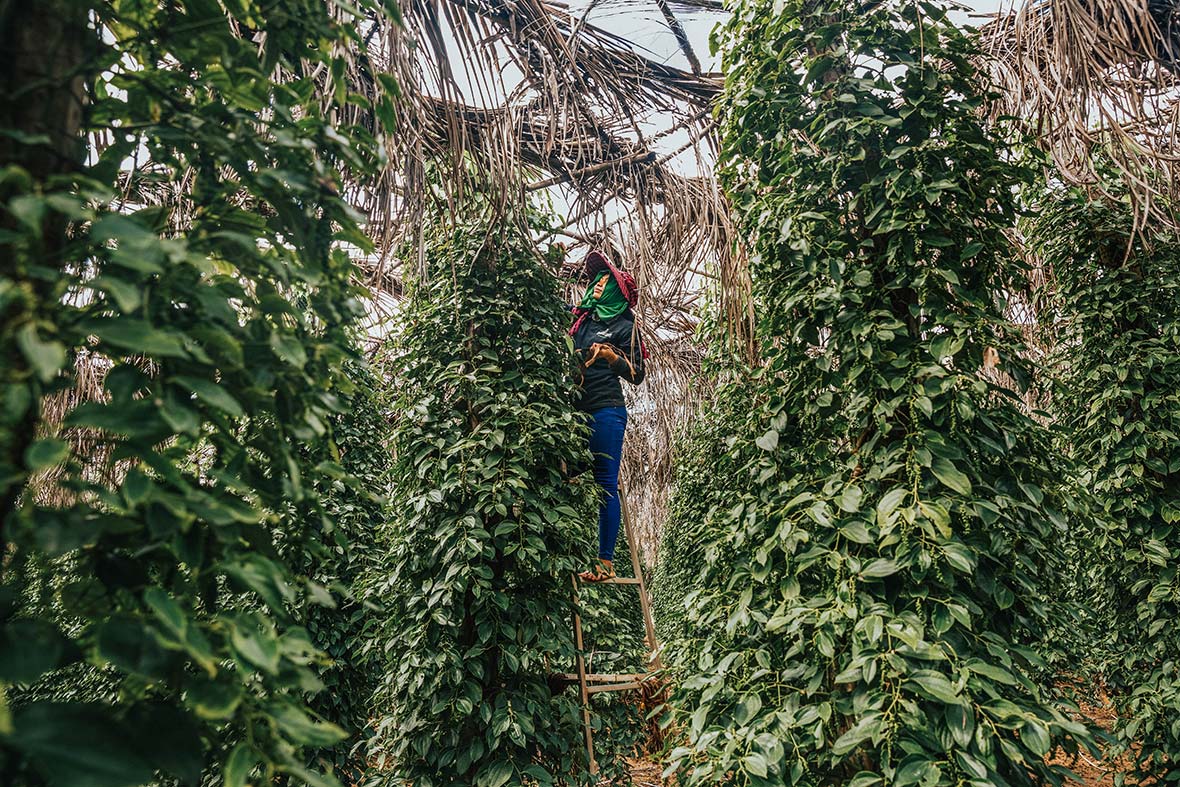
Peppercorns have been cultivated in Cambodia since the 13th century, but the industry blossomed under French colonial rule in the 19th and 20th centuries, when European chefs started appreciating the pepper’s notably floral and slightly sweet flavour. Pepper production was, like everything in Cambodia, rudely and tragically curtailed during the murderous reign of the Khmer Rouge during the late 1970s and the years of bloody civil war that followed.
In the last decade or so, however, the industry has witnessed a remarkable renaissance, with the ingredient once more the toast of gourmands and culinary heavyweights across the globe. Celebrity chefs such as Anthony Bourdain have championed its cause, as has Michael Laiskonis, the executive pastry chef at the famed Le Bernardin restaurant in New York.
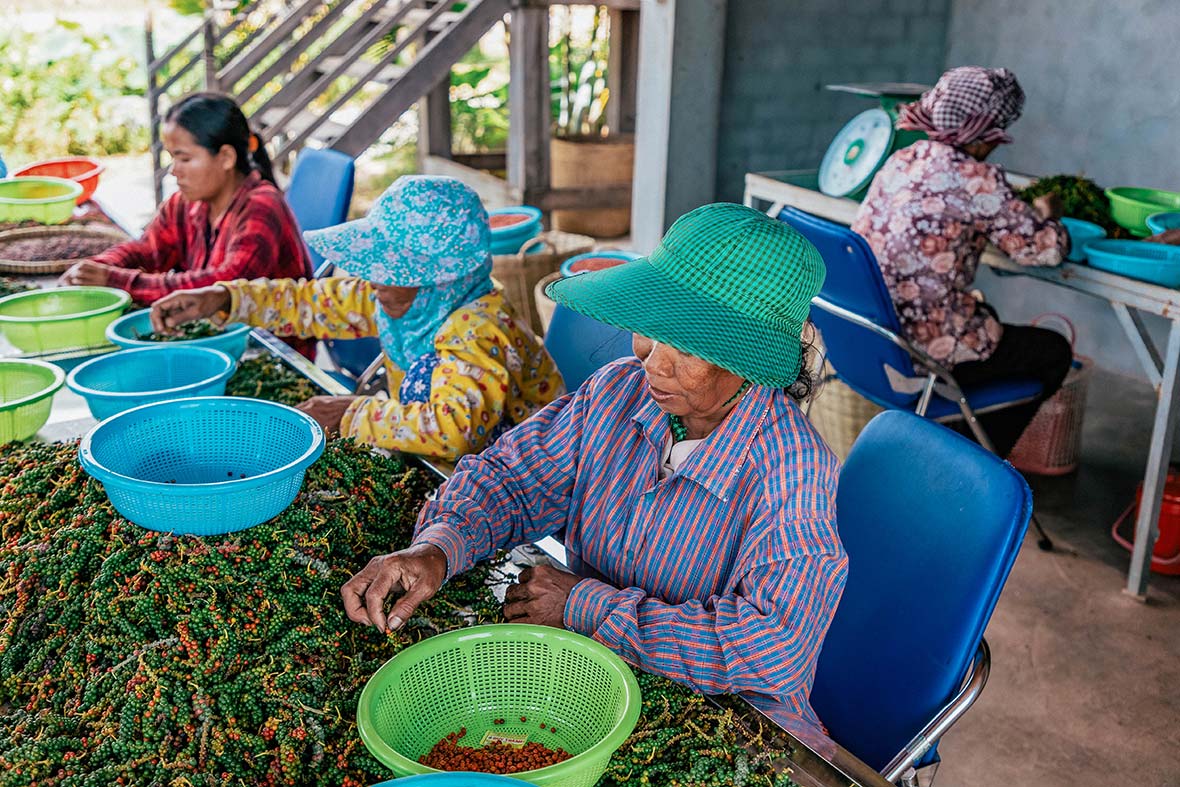
“We were contacted by a buyer from one of the world’s most famous department stores a while back,” comments the owner of one of the biggest pepper farms in the area. “They wanted to take 15 tonnes of our pepper every month. We are only a small operation so we couldn’t fulfil that commitment, but it just goes to show how wide the demand is for this stuff.”
Like Kampot pepper, the Park Hyatt Siem Reap is very much “best in class” and is the perfect setting for an exclusive food event. One of the most exclusive addresses in Cambodia’s famous temple town, the luxurious property exudes stately grace in everything from its minimalist chic décor to its colonnaded outdoor pool and tasteful deployment of Khmer artworks.
The classy theme extends to the hotel’s regular culinary events, where a team of chefs oversee sumptuous multi-course feasts that showcase one particular locally produced ingredient.
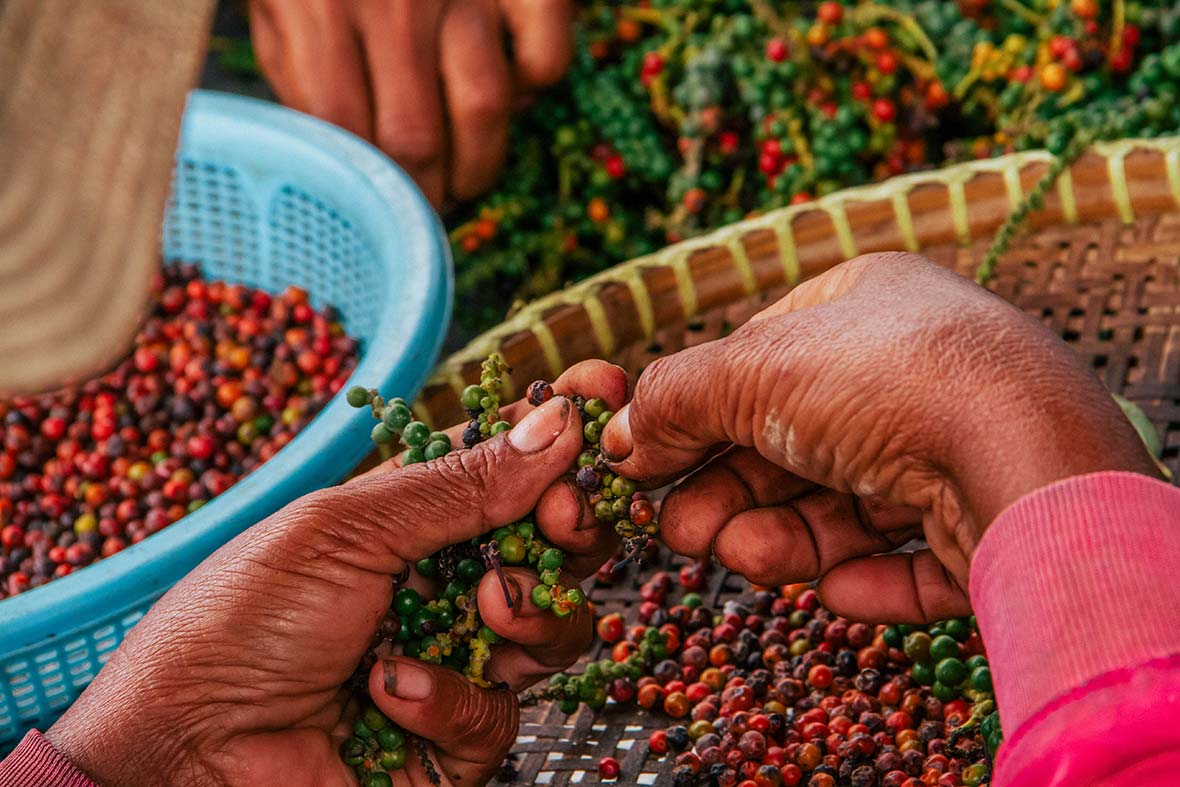
On this occasion, Kampot pepper is the star with black, white, red and green varieties being utilised in stunning creations such as red-pepper cured beef tenderloin with mozzarella cheese, grilled pineapple, cherry tomato and arugula and charcoal grilled Mekong lobster, pumpkin puree, snow peas and white pepper béarnaise.
After a concluding coup de grace of dark chocolate mousse with a green pepper coulis (the distinctive sweetness of Kampot pepper balancing the unlikely-sounding juxtaposition of sugar and spice), Theam joins us to sing the praises of this Cambodian treasure.
“As a chef you always want to cook with the best ingredients,” he tells us. “Cambodia is a developing nation, so it isn’t always possible to do that here. That’s why it is fantastic that we have a truly world class product that is unique to this country.”
